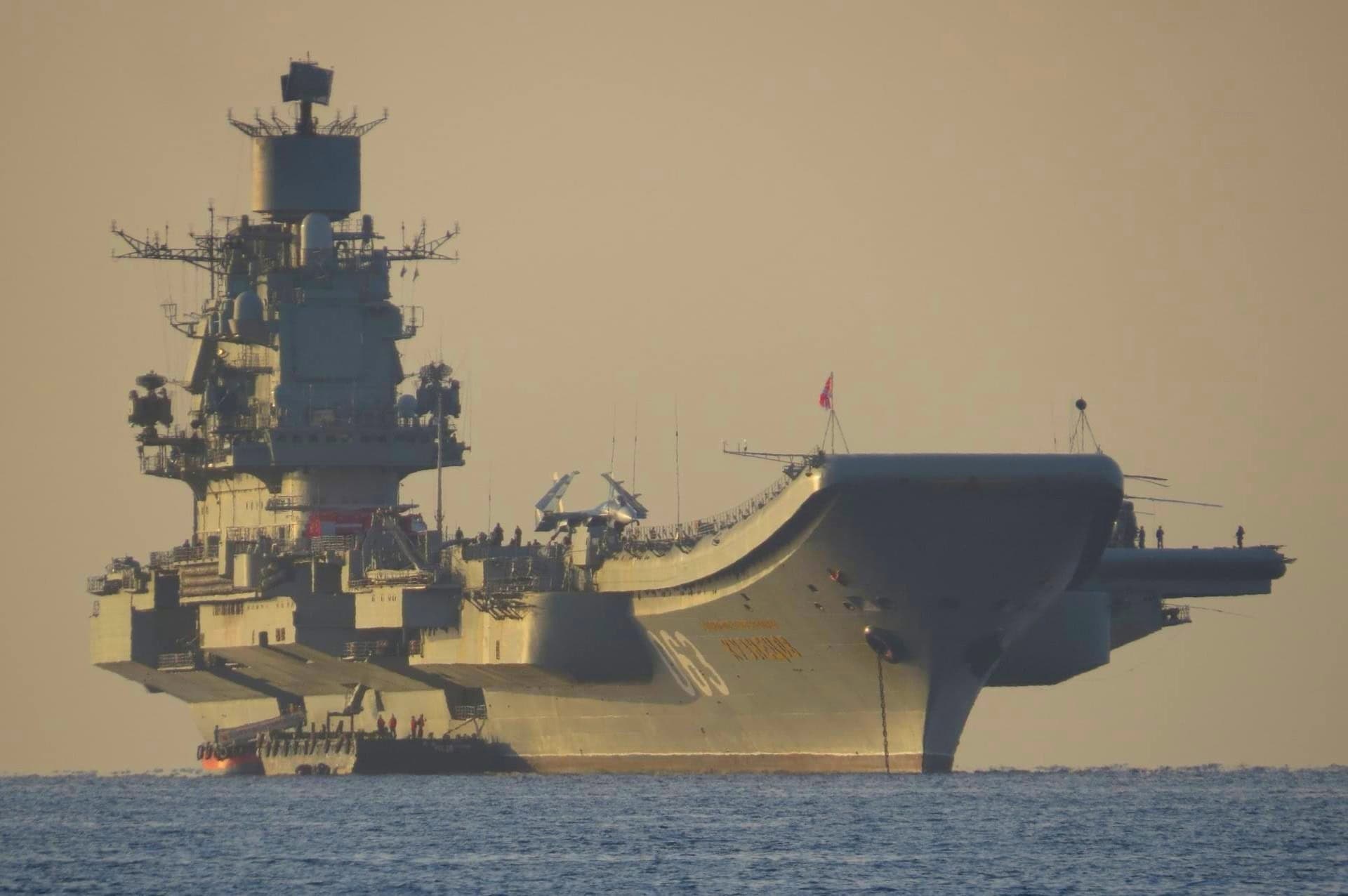Russia’s Admiral Kuznetsov aircraft carrier has a long and infamous history. Originally meant to serve as the flagship of the Soviet Navy, the carrier now sits in a repair plant, undergoing massive repairs with many questions about whether it will ever sail again.
Classified as a “heavy aircraft-carrying cruiser,” the Admiral Kuznetsov is unique among other aircraft carriers for its unconventional design and construction.
Russia’s Admiral Kuznetsov: Early Development and Construction
The origins of the Admiral Kuznetsov trace back to the late 1970s and early 1980s, during the height of the Cold War. The Soviet Union sought to enhance its naval capabilities by developing a new class of aircraft carriers. The project was initially designated as Project 1143.5, and the lead ship was laid down at the Black Sea Shipyard in Nikolayev, within the Ukrainian Soviet Socialist Republic, on April 1, 1982.
Originally named Tbilisi, the ship was later renamed Leonid Brezhnev in honor of the Soviet leader. It was launched on December 6, 1985, and underwent sea trials under this name. However, following Brezhnev’s death and the subsequent political changes, the ship was renamed Admiral Flota Sovetskogo Soyuza Kuznetsov (Admiral of the Fleet of the Soviet Union Kuznetsov) in honor of Nikolay Gerasimovich Kuznetsov, a prominent Soviet naval commander.
Why all the Smoke?
The Admiral Kuznetsov has a displacement of approximately 43,000 tons when light, 53,000 tons standard, and up to 58,600 tons when fully loaded. The ship is 305 meters (1,000 feet 8 inches) long overall, with a beam of 72 meters (236 feet 3 inches) and a draft of 10 meters (32 feet 10 inches). It is powered by steam turbines, with eight turbo-pressurized boilers driving four shafts, producing a total of 200,000 horsepower. This allows the ship to reach speeds of up to 29 knots (54 km/h; 33 mph). The carrier has a range of 8,500 nautical miles (15,700 km; 9,800 mi) at a cruising speed of 18 knots (33 km/h; 21 mph) and can operate for up to 45 days without resupply.
Unlike western carriers, which used nuclear power or gas turbines, the Admiral Kuznetsov is powered by a conventional mazut fueled power plant. Because of its powerplant, the ship leaves a heavily visible trail of black smoke wherever it travels. Russian naval officials have said that the large smoke plumage is also due a failure to properly preheat the mazut fuel before being fed to the engine.
The Admiral Kuznetsov features a ski-jump ramp at the bow for launching aircraft and arrestor wires for landing. This design supports Short Take-Off But Arrested Recovery (STOBAR) operations. The carrier can accommodate a mix of fixed-wing aircraft and helicopters.
Typically, it carries around 18 Su-33 fighter jets, 6 MiG-29K aircraft, and several helicopters, including Ka-31 and Ka-27 models. The ship is equipped with an angled flight deck and a hangar deck for aircraft maintenance and storage.
Commissioning and Early Service
The Admiral Kuznetsov was officially commissioned into the Soviet Navy on January 20, 1991, just months before the dissolution of the Soviet Union. This timing meant that the ship transitioned to the Russian Navy, becoming its flagship. The carrier was fully operational by 1995.
The design of the Admiral Kuznetsov was unique compared to Western aircraft carriers. It was classified as a “heavy aircraft-carrying cruiser” (TAKR) rather than a traditional aircraft carrier. This classification allowed it to transit the Turkish Straits under the Montreux Convention, which restricts the passage of aircraft carriers. The ship features a ski-jump ramp for launching aircraft and arrestor wires for landing, supporting a mix of fixed-wing aircraft and helicopters.
Operational History
Throughout the 1990s and early 2000s, the Admiral Kuznetsov participated in various naval exercises and operations. Its primary role was to project air power and provide air defense for the Russian fleet. The carrier’s air wing typically included Su-33 fighter jets, MiG-29K aircraft, and various helicopters.
One of the most notable deployments of the Admiral Kuznetsov occurred in 2016 when it was sent to the Mediterranean Sea to support Russian military operations in Syria. This deployment marked the first time the carrier had been used in combat operations.
However, the mission was marred by several incidents, including the loss of two aircraft due to technical issues with the arrestor wires.
Current Status and Future Prospects
As of early 2025, the Admiral Kuznetsov remains under repair at the 35th Ship Repair Plant in Murmansk. The modernization program aims to upgrade the ship’s propulsion system, improve its air defense capabilities, and enhance its overall combat effectiveness. Despite the challenges, the Russian Navy remains committed to returning the carrier to operational status.
The future of the Admiral Kuznetsov is uncertain. While the ship is expected to rejoin the fleet, its long-term viability is a subject of debate. Some experts argue that the carrier’s age and the extensive repairs required may limit its effectiveness. Others believe that the modernization efforts will enable the ship to continue serving as a valuable asset for the Russian Navy.
Admiral Kuznetsov: A Photo Essay
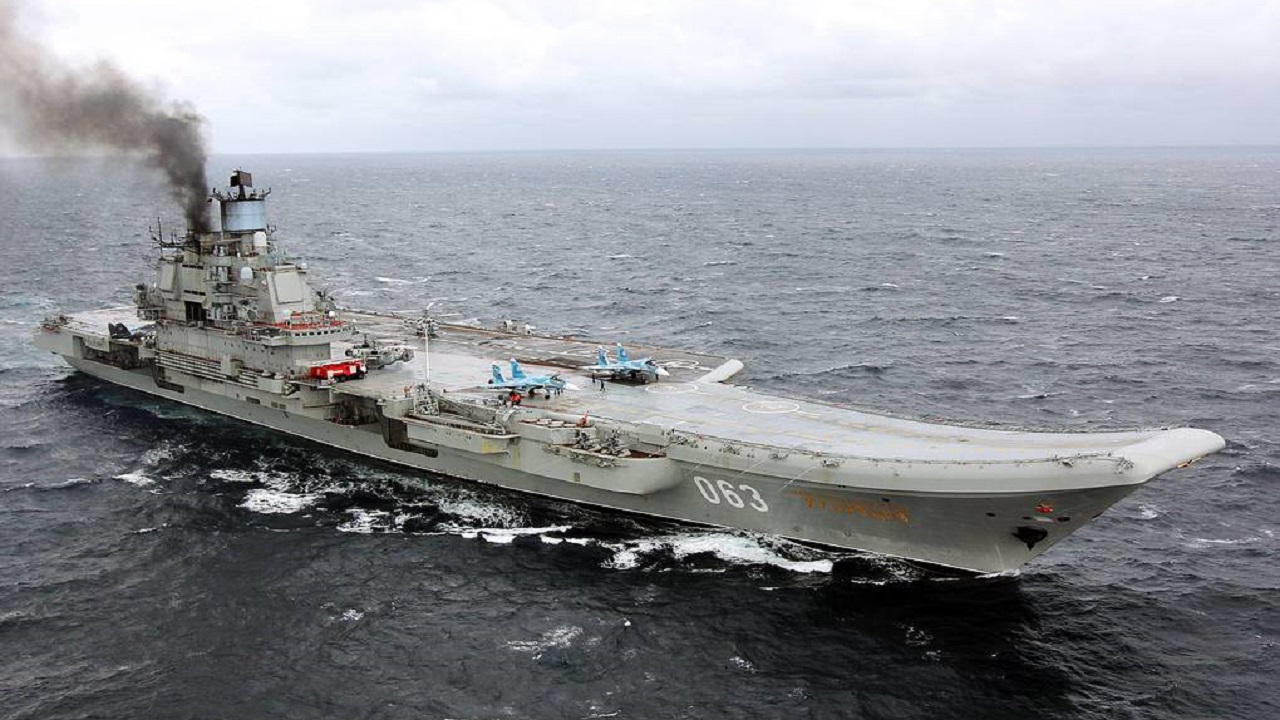
Russian Navy Northern Fleet Press Office/TASS/Russian State Media
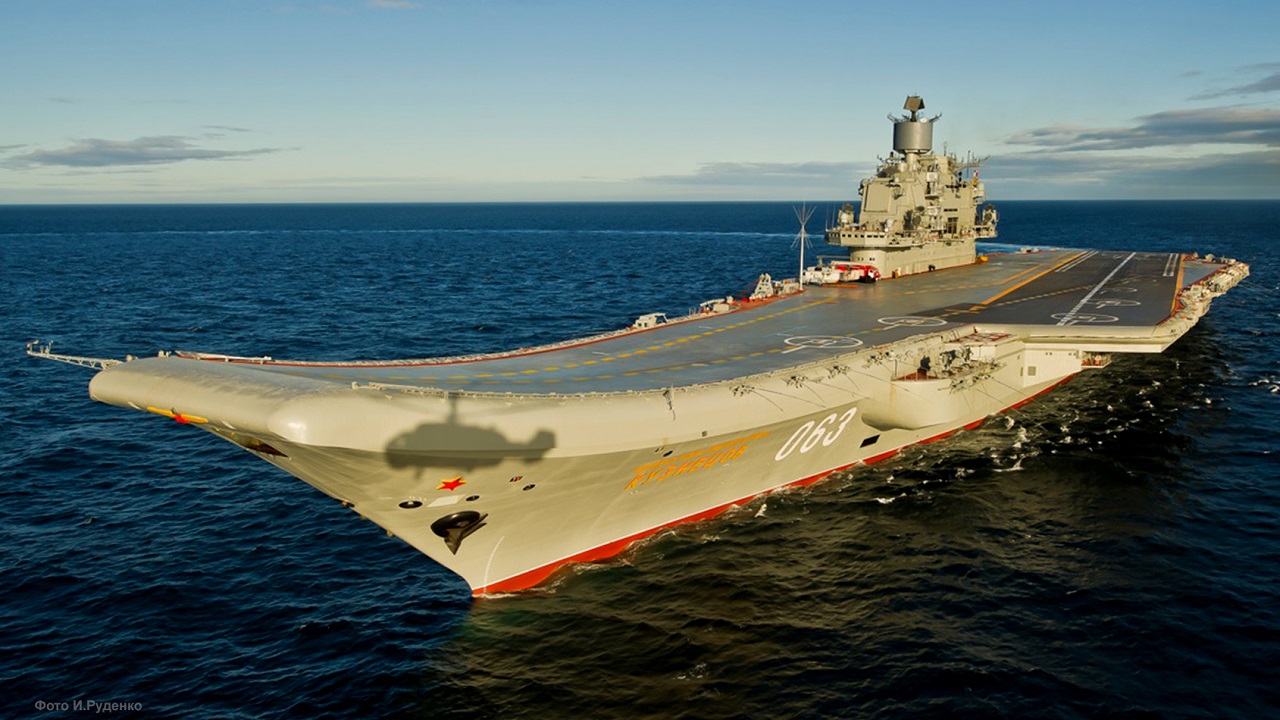
Russia’s Admiral Kuznetsov. Image Credit: Creative Commons.
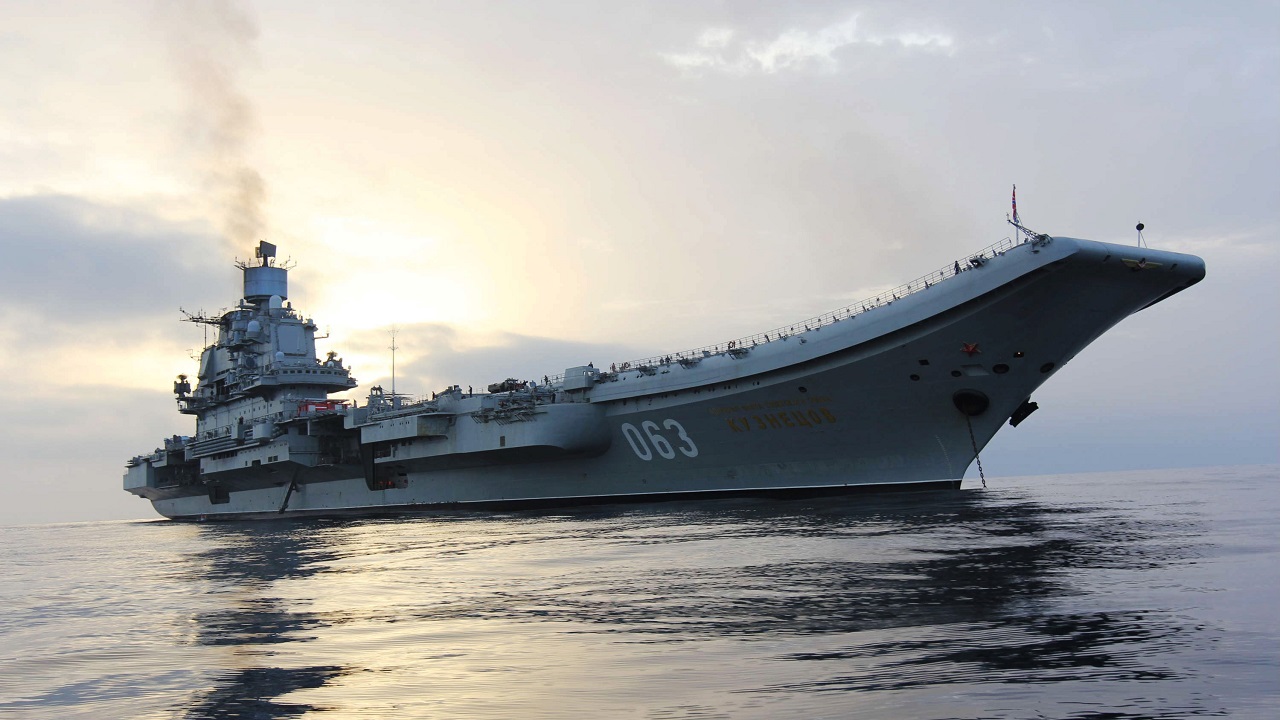
Admiral Kuznetsov Aircraft Carrier from Russia. Image Credit: Creative Commons.
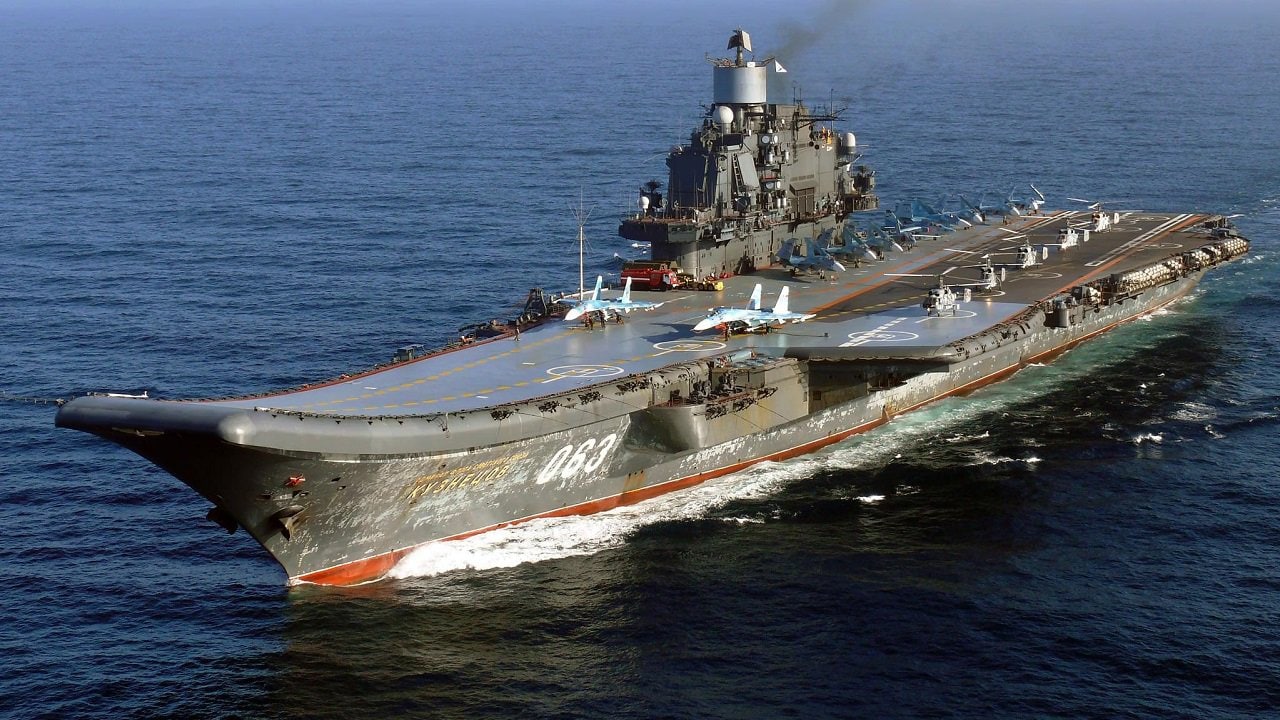
Admiral Kuznetsov. Image Credit: Creative Commons.

Admiral Kuznetsov Aircraft Carrier. Image Credit: Creative Commons.
About the Author: Isaac Seitz
Isaac Seitz, a 19FortyFive Defense Columnist, graduated from Patrick Henry College’s Strategic Intelligence and National Security program. He has also studied Russian at Middlebury Language Schools and has worked as an intelligence Analyst in the private sector

